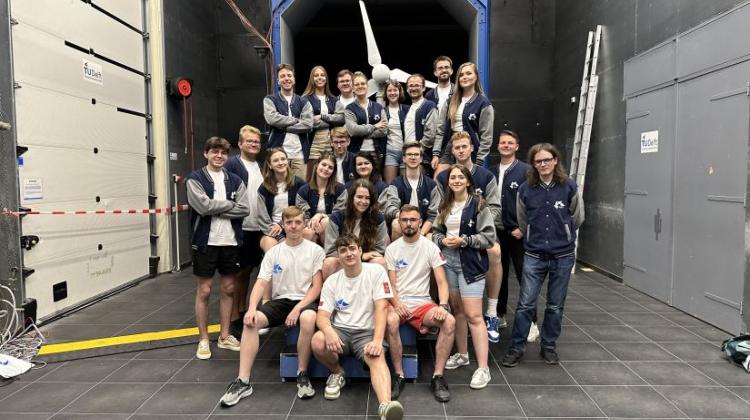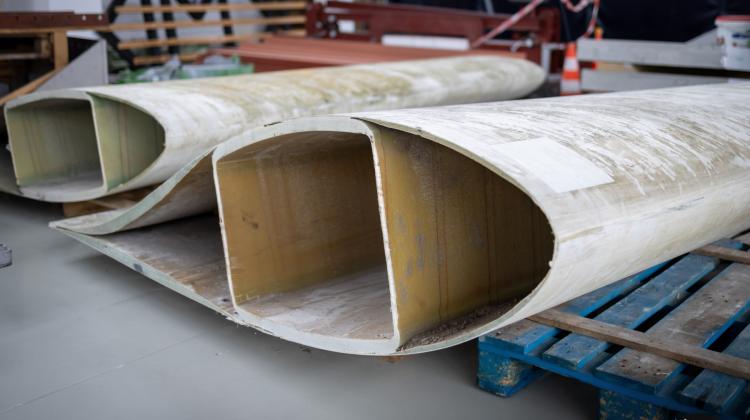Lodz University of Technology students build award-winning wind turbine
 Photo from press release
Photo from press release
An innovative wind turbine developed by students from Lodz University of Technology in the GUST project has won first place in the International Small Wind Turbine Contest with the best result in the highest annual energy production (AEP) category.
University spokesperson Dr. Ewa Chojnacka said: 'A team of TUL students has won an impressive victory in the finals of International Small Wind Turbine Contest. They return to Poland with two of the three main prizes. Their innovative wind turbine won first place, beating teams from Canada, the Netherlands, Egypt or Denmark. In addition, they achieved the best result in the highest annual energy production (AEP) category.’
GUST (Generative Urban Small Turbine) is a student project carried out by members of the Student Energetics Interest Club (SKNE) at the Institute of Fluid-Flow Machinery at the Faculty of Mechanical Engineering, Lodz University of Technology. It brings together students from the following faculties: Faculty of Mechanical Engineering; Faculty of Electrical Electronic, Computer and Control Engineering; Faculty of Chemistry, Faculty of Organization and Management and Faculty of Process and Environmental Engineering, and the International Faculty of Engineering.
The winning students said: ’GUST team's latest design proved to be unparalleled in terms of efficiency. The winning turbine achieved the highest efficiency rate in its history, surpassing all the prototypes presented in the finals.’
According to Chojnacka, the GUST turbine was able to generate more than 1 kW of power in 13 m/s winds. This is an extremely impressive result that highlights the effectiveness and efficiency of this new technology.
It is worth noting that the GUST team successfully developed the first turbine parts using domestic materials. According to experts, this is a milestone in gaining independence from imported materials
In its design, the winning team used a number of solutions that allowed them to achieve the power coefficient, determining the turbine efficiency, at the level of 0.41, which is an excellent result for small wind turbines.
These solutions include reduced resistance in bearings, ecological wooden housing, enabling quick replacement of components, and the use of biocomposites for some turbine parts.
In addition, most of the energy conversion system was moved to the control cabinet, two variants of the rotor were tested and a strain gauge was used to measure the 'shaft torque' - which enabled a better dynamic analysis of the entire system. (PAP)
Author: Agnieszka Grzelak-Michałowska
PAP - Science in Poland
agm/ dki/ kap/
tr. RL
Przed dodaniem komentarza prosimy o zapoznanie z Regulaminem forum serwisu Nauka w Polsce.
















